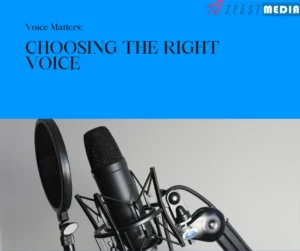PR Communication
In public relations, PR communications, every word matters. The tone, style, and structure of your message can significantly impact how it’s received by your audience. One crucial aspect often overlooked is the choice between active and passive voice. Understanding the difference between these two forms of expression is fundamental for crafting compelling and impactful communications.
Active Voice: Engaging and Direct
Active voice is the preferred choice for most PR communications. In active voice, the subject of the sentence performs the action, making the message clear, concise, and engaging. It imbues your writing with a sense of immediacy and authority, capturing the reader’s attention and driving the message forward.
Consider the following example:
Active Voice in PR Communication: “Our company launched a groundbreaking new product.”
In this sentence, “our company” is the subject performing the action of launching the product. The message is direct, highlighting the company’s initiative and achievement.
Active voice is particularly effective when you want to emphasize agency, responsibility, and confidence. It allows you to showcase your organization as the driving force behind its actions, products, or initiatives. By using active voice, you assert control over the narrative, positioning your brand as a proactive leader in its field.
Read more: Importance of active voice in content.
Passive Voice: Detached and Indirect
While active voice is generally preferred in PR communications, there are instances where passive voice may be appropriate. In passive voice, the subject of the sentence receives the action, creating a more detached and indirect tone. While passive voice can sometimes sound more formal or objective, it can also make your message less engaging and less impactful.
Consider the same example rewritten in passive voice:
Passive Voice in PR Communication: “A groundbreaking new product was launched by our company.”
In this sentence, the focus shifts away from the company as the active agent to the product being launched. While passive voice can be useful for emphasizing the object or outcome of an action, it often lacks the clarity and assertiveness of active voice.
Passive voice can also obscure accountability and responsibility, which is why it’s generally avoided in PR communications. Messages that utilize passive voice may come across as evasive or lacking transparency, undermining the credibility of the sender. In a field where trust and credibility are paramount, clear and direct communication is essential.
Choosing the Right Voice for Your Message

When crafting PR communications, it’s essential to consider your audience, purpose, and desired tone. While active voice is typically more effective for conveying confidence and authority, there may be situations where passive voice is more appropriate.
For example, passive voice may be used:
– When the focus is on the outcome rather than the actor: “The issue was resolved quickly and efficiently.”
– When the actor is unknown or irrelevant: “Mistakes were made, and lessons were learned.”
– When you want to maintain neutrality or objectivity: “The data were analyzed to identify trends.”
However, even in these cases, it’s crucial to use passive voice sparingly and strategically. Too much passive voice can make your writing sound stilted or convoluted, detracting from your message’s effectiveness.
In PR communications, the choice between active and passive voice can significantly impact how your message is perceived. Active voice is generally preferred for its clarity, directness, and ability to engage the audience. It allows you to assert control over the narrative, positioning your organization as a proactive leader in its field.
While passive voice has its place in certain contexts, it should be used judiciously to avoid sounding evasive or lacking in accountability. By mastering the nuances of active and passive voice, you can enhance the effectiveness of your PR communications and ensure that your message resonates with your audience.






